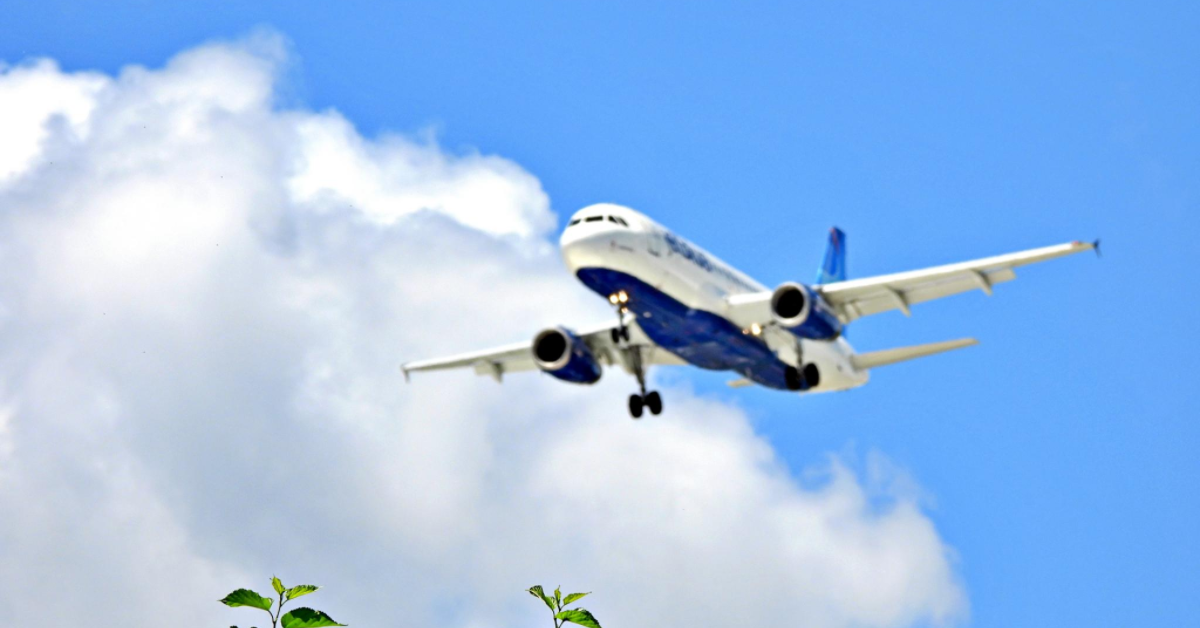
The aviation industry, a marvel of human engineering and innovation, has transformed the way we connect with the world. From bridging continents in mere hours to facilitating global commerce, the benefits of air travel are undeniable. However, like many technological advancements, it comes with its own set of environmental challenges. One of the most pressing concerns is the industry’s contribution to global warming through greenhouse gas emissions.
Understanding the Emissions
Airplanes primarily burn jet fuel, a type of fossil fuel, to power their engines. The combustion of this fuel releases carbon dioxide (CO2) into the atmosphere, a primary greenhouse gas responsible for trapping heat. But CO2 is not the only byproduct. The combustion process also releases water vapor, nitrogen oxides, particulates, and other compounds. Nitrogen oxides, in particular, can lead to the formation of ozone in the atmosphere, another potent greenhouse gas.
Quantifying the Impact
According to the International Air Transport Association (IATA), the aviation industry is responsible for approximately 2-3% of global CO2 emissions. While this might seem like a small percentage, it’s crucial to understand the broader context. If the aviation industry were a country, it would rank in the top 10 emitters worldwide. Moreover, the sheer volume of flights—over 38 million in 2019 alone—means that even small per-flight emissions add up quickly.
Furthermore, the non-CO2 effects of aviation, such as the formation of contrails and cirrus clouds, can amplify the warming effect. Some studies suggest that these non-CO2 impacts could be as significant, if not more so, than the direct CO2 emissions from aircraft.
The Growth Challenge
The aviation industry has been growing steadily, with passenger numbers expected to double by 2037. This growth, while economically beneficial, poses a significant challenge for global emission reduction targets. As developing countries expand their aviation sectors and more people gain access to air travel, emissions are set to increase unless drastic measures are taken.
Unraveling the Causes
Before we try and identify solutions, we first need to understand that what are the underlying causes that lead to such high emissions from this sector? Delving deeper into the intricacies of the aviation world, we uncover the major factors contributing to its carbon footprint.
- Dependence on Fossil Fuels: The primary cause of GHG emissions in aviation is its heavy reliance on fossil fuels, specifically jet fuel. Unlike ground transportation, which is seeing a shift towards electric and hybrid vehicles, aviation lacks feasible alternatives to conventional fuels on a large scale. The energy density of jet fuel, which determines how much energy can be stored in a given volume, is currently unmatched by batteries or other energy storage systems. This makes it challenging to transition to electric or hybrid aircraft for long-haul flights.
- Engine Combustion Process: The combustion process in jet engines is not just responsible for CO2 emissions. It also releases water vapor at high altitudes, leading to contrail formation. These contrails can evolve into cirrus clouds, which have a warming effect on the Earth’s climate. Additionally, the combustion process emits nitrogen oxides (NOx), which can produce ozone, another potent GHG, when reacting with other chemicals in the atmosphere.
- Rapid Industry Growth: The aviation industry has witnessed exponential growth over the past few decades. With increasing globalization, the demand for both passenger and cargo flights has surged. More flights mean more fuel consumption and, consequently, more emissions. The projected growth of the industry further exacerbates the challenge of reducing its carbon footprint.
- Inefficient Air Traffic Management: Air traffic management inefficiencies, such as indirect flight routes, holding patterns, and congestion at airports, lead to unnecessary fuel burn. While efforts are being made to optimize flight paths and improve air traffic control systems, there’s still a long way to go in achieving seamless, efficient operations.
- Older Aircraft in Operation: The aviation sector has a significant number of older aircraft still in operation. These planes, designed and built decades ago, lack the advanced aerodynamics and materials of newer models, leading to lower fuel efficiency. Phasing out these older aircraft is a slow process due to the high costs involved and the demand for air travel.
- Limited Adoption of Sustainable Aviation Fuels (SAFs): While SAFs present a promising solution to reduce lifecycle CO2 emissions, their adoption is still limited. High production costs, limited availability, and the need for significant infrastructure changes have slowed their widespread use.
- Economic Considerations: Fuel is one of the most significant operational costs for airlines. While this might seem like an incentive to reduce fuel consumption, it often leads to practices like “tankering,” where planes carry extra fuel to avoid refueling at more expensive locations. Such practices increase emissions due to the added weight of the extra fuel.
The aviation industry’s high GHG emissions are a result of a combination of technological, operational, and economic factors. Addressing these causes requires a multi-faceted approach, involving technological innovations, policy changes, and global cooperation. As the world grapples with the pressing challenge of climate change, understanding these underlying causes is the first step towards crafting effective solutions for a more sustainable aviation future.
Industry Initiatives
Recognizing the environmental impact, the aviation industry has taken several steps to mitigate its carbon footprint:
- Fuel Efficiency: Newer aircraft models are designed to be more fuel-efficient. For instance, the Boeing 787 and Airbus A350 use advanced materials and aerodynamics to reduce fuel consumption.
- Alternative Fuels: Research is ongoing into sustainable aviation fuels (SAFs) derived from sources like algae, waste oils, and agricultural residues. These fuels can significantly reduce lifecycle CO2 emissions.
- Operational Improvements: Airlines are optimizing flight paths, improving maintenance practices, and reducing onboard weight to enhance fuel efficiency.
- Carbon Offsetting: Some airlines offer passengers the option to offset their carbon footprint by investing in environmental projects.
- International Agreements: The Carbon Offsetting and Reduction Scheme for International Aviation (CORSIA) is an initiative by the International Civil Aviation Organization (ICAO) to stabilize CO2 emissions at 2020 levels.
While the initiatives are commendable, there’s a consensus that more needs to be done. The industry’s growth projections mean that even with all the current measures, absolute emissions could still rise. Electrification of aircraft, radical innovations in propulsion, and systemic changes in the way we approach air travel might be necessary.
Explore Recent Technology Case Studies Addressing GHG Emissions
Eight technology solutions to reduce Aviation emissions
The aviation sector’s commitment to reducing its carbon footprint is being bolstered by a suite of digital technologies. These tools, each harnessing unique capabilities, are at the forefront of the industry’s sustainability transformation. Let’s delve deeper into how these digital marvels are making a difference.
- Artificial Intelligence (AI).
- Unique Property: Predictive Analysis.
- AI, with its ability to analyze vast datasets and make predictions, is revolutionizing aircraft maintenance. Predictive maintenance, powered by AI algorithms, anticipates when parts will fail or when maintenance is due. This ensures that aircraft operate at peak efficiency, reducing fuel consumption and emissions.
- Internet of Things (IoT).
- Unique Property: Real-time Data Collection.
- IoT devices, embedded in various parts of an aircraft, collect real-time data on engine performance, fuel consumption, and more. This continuous stream of data allows for immediate adjustments, optimizing flight operations and ensuring fuel-efficient routes and altitudes.
- Blockchain.
- Unique Property: Secure and Transparent Data Management.
- Blockchain’s decentralized ledger system offers a transparent and tamper-proof way to track and verify the use of sustainable aviation fuels (SAFs). This ensures that SAFs meet sustainability criteria and provides a trustworthy certification system for green aviation initiatives.
- Augmented Reality (AR) and Virtual Reality (VR).
- Unique Property: Immersive Training and Visualization.
- AR and VR are transforming pilot and crew training. By simulating real-world flight scenarios, these technologies offer an immersive training experience, ensuring pilots are well-equipped to handle fuel-efficient flight operations. Additionally, AR can assist maintenance crews in identifying and rectifying issues faster, reducing aircraft downtime.
- Edge Computing.
- Unique Property: On-device Data Processing.
- In the aviation context, edge computing allows for data processing directly on aircraft, without the need to send data to a central server. This on-device processing ensures real-time insights and quicker decision-making, especially crucial for optimizing flight paths and reducing fuel consumption in-flight.
- Big Data Analytics.
- Unique Property: Comprehensive Data Analysis.
- Big Data tools analyze vast amounts of flight data to derive insights on optimal flight paths, fuel consumption patterns, and more. This aids in strategic planning for fuel-efficient operations.
- Quantum Computing.
- Unique Property: Ultra-fast Complex Calculations.
- Quantum computers can process complex flight optimization problems faster than traditional computers. They hold potential in real-time flight path optimization, considering multiple variables to ensure the most fuel-efficient route.
- 5G Connectivity.
- Unique Property: High-speed Data Transmission.
- 5G ensures faster and more reliable data transmission between aircraft and ground stations. This enhanced connectivity allows for real-time adjustments based on weather, air traffic, and other variables.
Conclusion
The fusion of aviation with these digital technologies is crafting a blueprint for a sustainable future. As the industry continues to innovate, the convergence of technology and sustainability is set to redefine the skies.
If your company is helping reduce Aviation Emissions
The ESG Intelligence platform showcases companies that are building or using technology solutions for sustainability issues. If your company is one of them, we will be happy to showcase your case studies on our platform for all ESG Enthusiasts.
ESG Intelligence Platform
Check out the initiatives and innovations related to different ESG themes now!
